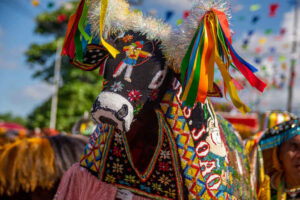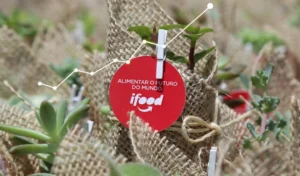Study points out the 36 trees that gained more than lost trees in the 2000s; Brazil is not on the list
Amidst so much news about deforestation and fires due to global warming, a little good news emerges: one in five countries in the world managed to gain more trees than they lost in the first two decades of the 2000s.
This is what shows World Resources Institute (WRI), an environmental NGO based in the United States, based on data from a study made by scientists from the University of Maryland (USA) and WRI itself using files from Landsat, an Earth observation satellite program.
According to these data, 36 countries recorded a positive balance between the number of trees lost and those planted in the 2000s. It's not much, it's true, but it's already a way of knowing that it's possible to quantify reforestation.
Uruguay is the only country on the entire American continent on this list. The other countries that are gaining more trees than losing are:
Algeria; China; Bangladesh; Belarus; Bosnia Herzegovina; Kazakhstan, North Korea; Bulgaria; Denmark; Netherlands; Hungary; India; Will; Ireland; Lithuania; Morocco; Moldavia; Nepal; Pakistan; Poland; UK; Romania; Serbia; Sudan; Southern Sudan; Tajikistan; Türkiye; Ukraine and Uzbekistan.
Brazil does not appear in this list. Between 2000 and 2018, according to the newspaper’s report State of Minas Based on the Land Use in Brazilian Biomes survey, released by IBGE in 2020, we lost an area corresponding to that of Spain in forests. The Amazon and Cerrado were the biomes that suffered most from deforestation, corresponding to 90% of all destruction, according to IBGE (Brazilian Institute of Geography and Statistics).
In the Amazon, 18 trees were felled every second throughout 2021, shows a report from Folha de S.Paulo on the numbers from the Annual Deforestation Report (RAD), from the MapBiomas project. As a result, Brazil lost 189 hectares of native vegetation per hour, totaling 16,500 km² of deforestation in the year (three times the area of the Federal District).
Slightly positive balance
According to WRI, the account has a slight positive balance. The entire area recovered in 20 years reaches 130.9 million hectares — larger than Peru. In the same period, the world lost 100 million hectares. The United States, Canada and Russia together recorded more than half of the gain in new trees (68 million hectares), but they devastated so much that their balance was negative.
The new trees, according to the publication, do not compensate for the loss of old, carbon-rich forests. Older ones store carbon differently, not to mention that your old home is worth more to wildlife than a newly planted one.
However, if it is impossible to preserve what is already standing, it is better to encourage reforestation (even if natural) than to leave it as it is. Another study, conducted by WRI in partnership with other institutions in 2020, showed that allowing forests to recover on their own in previously degraded areas has the potential to absorb 8.9 billion tons of CO2 of the atmosphere by 2050, the equivalent of 23% of annual emissions.
Read too
Deforestation destroyed 21 thousand hectares in the Atlantic Forest in 2021
What can we do to reduce the environmental impact?
Less CO2 and plastic: the numbers of iFood's environmental actions
Swedes feed algae to livestock and create “low methane” meat
How an agrivoltaic farm combats climate change
Did you know that carbon neutral meat already exists?


